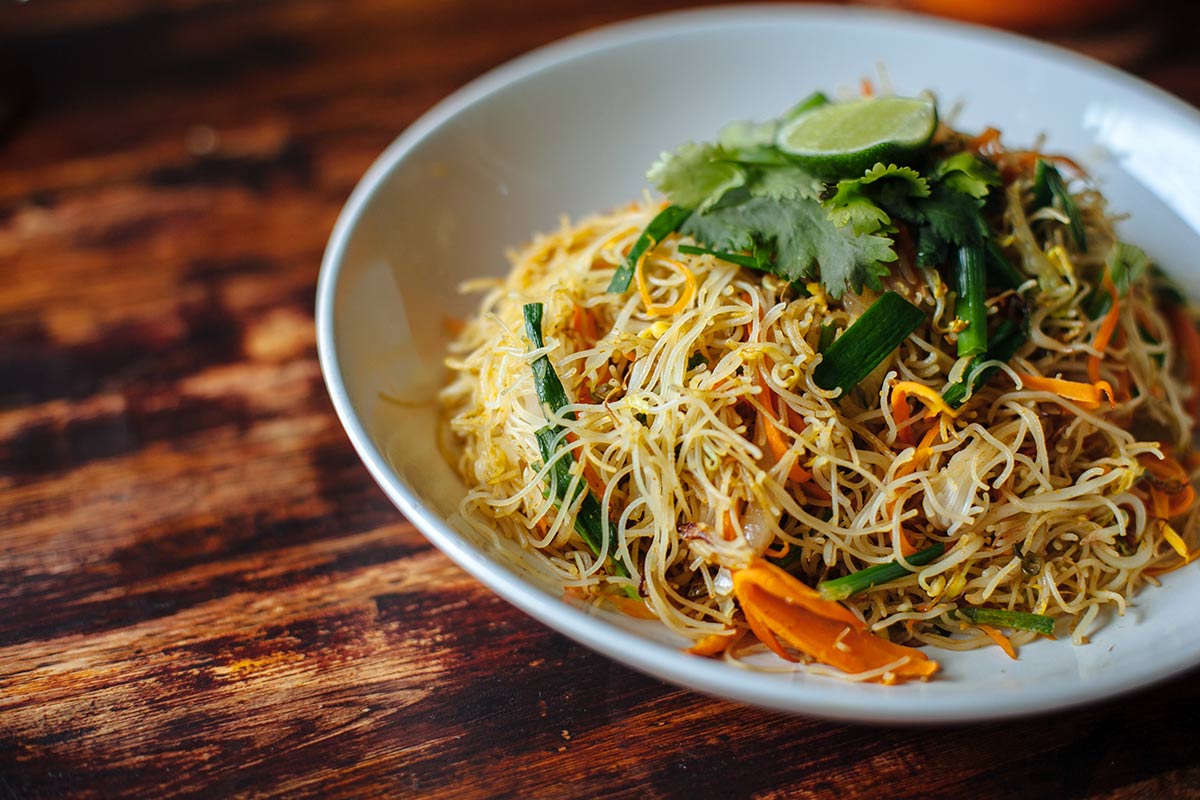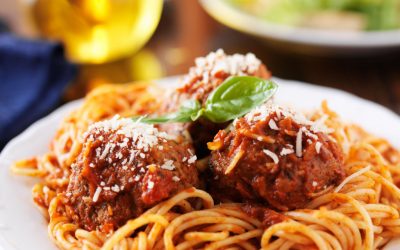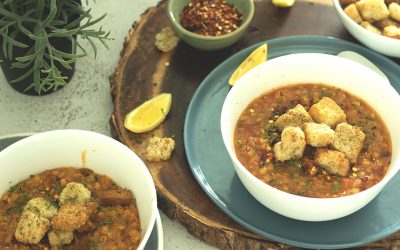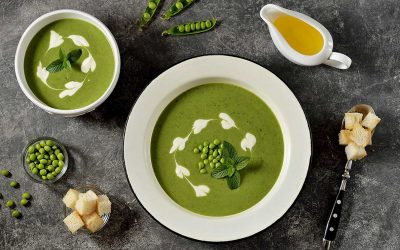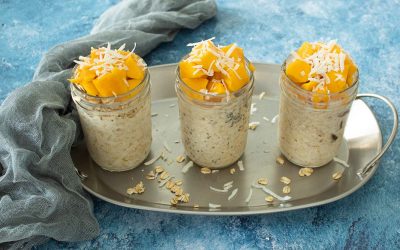Ingredients
Directions
Boil the noodles for one minute. Noodles should be elastic when pulled. Drain and allow to cool.
Heat the oil in a large skillet over medium-high heat. Add the cabbage, carrot, ginger, and garlic. Sauté for a few minutes.
Mix into the skillet the tamari, vinegar, curry powder, black pepper, noodles, and Beyond Beef(less) Crumbles. Sauté and toss for couple of minutes or so until well mixed and heated through. The vegetables should still be crunchy.
Taste and adjust seasonings. It may need another tablespoon of vinegar and/or tamari, depending on the level of tartness or saltiness desired.
Garnish with cilantro, scallions, and a drizzle of toasted sesame oil. Serve immediately with lime wedges.
Notes:
Sweet potato glass noodles, ramen, rice noodles, or wheat vermicelli could be used in place of the bean glass noodles (also called bean threads). To add more protein to the dish, you could also add some of the new protein noodles, such as black bean or chickpea noodles. Cook the noodles al dente according to the package directions.
It may seem unusual to see curry powder in an Asian noodle dish. Singapore embraces many cultures. According to Wikipedia, Singapore is a combination of Asian and European cultures, mainly by Malay, South Asian, East Asian and Eurasian influences. It has a large Indian population, which is why you see curry powder in this recipe.
Use any noodle that is not wheat-based for a gluten-free dish.
Use any ground beef(less) product desired. Find a product that does not contain wheat.

